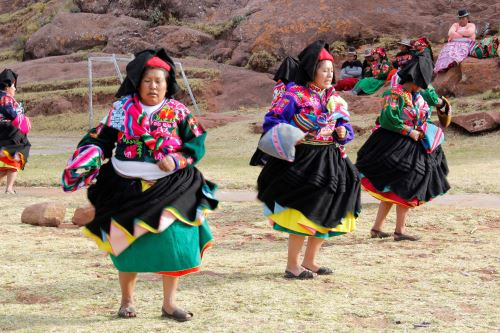14:01 | Acora (Puno region), Sep. 9.
Wendy, a three-year-old girl, gives a shy smile while playing with her grandmother's textile mill, as if she sensed that she would become the eldest daughter of this ancient textile art.
This article explores the ancient skill of
Aymara women living in the Thunuhuaya community of Puno region's Acora district.
Wendy comfortably wears a long and multicolored chullo, a distinctive woolen cap of young single women from this area.
This chullo is unique in shape and design. In fact, people in other communities refrain from wearing it, even if they need to protect themselves from cold and sun.
Youngsters in the Lake Acora area are often seen wearing the suggestive garment —inspired in natural elements such as the qantu, a highly regarded flowering plant found in the Andes— on their head.
"Flowers and lakes capture my feelings and inspiration," said Delia Quispe in her native language, Aymara. She is Wendy's grandmother, who has been involved in craftwork —her main economic activity— for more than 50 years.
Quispe got into the textile art when she was 12 years old. She inherited the art of weaving from her mother and practices it up to now.
She is a craftwork expert and shares her knowledge with her daughter and granddaughter as they are responsible to extend this ancient knowledge to future generations.

All her pieces of clothing feature designs and colors of the environment in which she lives, motivated by the qantu flower's aroma and the
Lake Titicaca's breeze.
Quispe passed on all her wisdom to her daughter, Yovana Mamani, a nutritionist who is determined to promote crafts and experiential travel. Some of her collections include the chullos she wore when she was single.
Women in the Lake Acora area usually portray flowers on their garments, but the long, multicolored chullo is the most beautiful and is worn by young single women only.
(END) JCB/MAO/RMB/MVB
Published: 9/9/2019